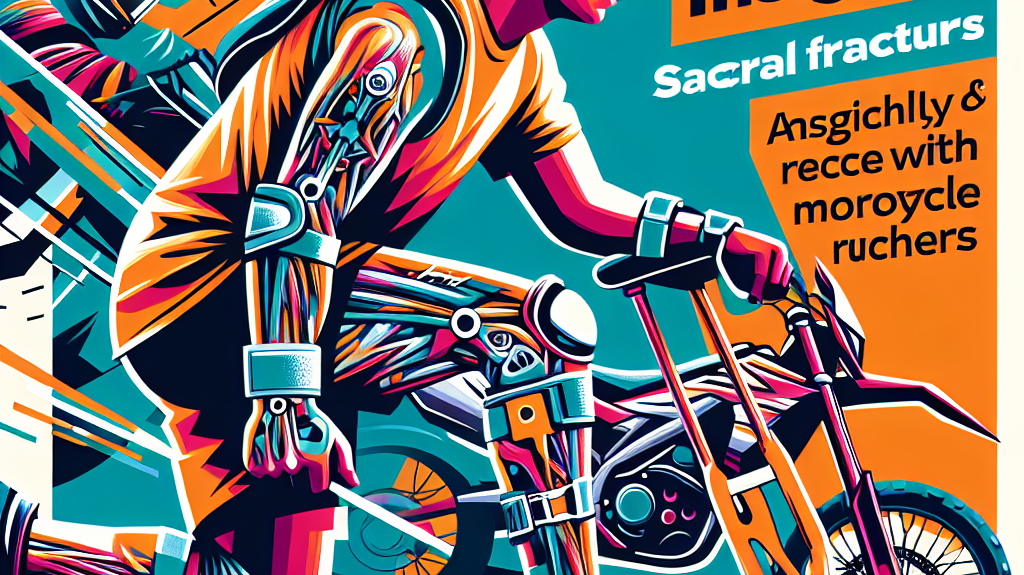How to Recover from Sacral Fractures: Insights and Tips for Riders
Understanding Sacral Fractures
What is a Sacral Fracture?
A sacral fracture occurs when the sacrum, a wedge-shaped bone at the base of the spine and part of the pelvis, breaks. This bone plays a vital role in supporting the upper body weight and connecting the spine to the pelvic ring.
Types of Sacral Fractures
- High-Energy Fractures: These typically result from severe traumas such as motor vehicle accidents or falls from height. They often involve other injuries and can be more complex to treat.
- Low-Energy or Insufficiency Fractures: These occur when the bone quality is insufficient to handle everyday stress, often due to osteoporosis. They are more common in older women.
- Stress Fractures: These are caused by repetitive stress on healthy bones, commonly seen in athletes.
Symptoms and Diagnosis
Recognizing the Symptoms
Symptoms of a sacral fracture can include lower back and buttock pain, swelling, and in severe cases, reduced control over bowel and bladder functions. If you experience persistent lower back pain that worsens with movement or lifting, it is crucial to seek medical attention.
Diagnosis
Diagnosing a sacral fracture can be challenging due to its location and the potential for misdiagnosis. A combination of clinical assessment, X-rays, and often CT scans or MRIs are used to confirm the fracture. CT scans are effective in detecting about 80% of these fractures, while MRIs can detect up to 95%.
Recovery Process
Non-Surgical Treatment
For most sacral fractures, especially those caused by low-energy trauma or osteoporosis, non-surgical treatment is recommended. Here are some key steps in the recovery process:
1. Rest and Pain Management
Initial treatment involves rest and pain relief. Medications such as acetaminophen or low-strength narcotics like tramadol may be prescribed to manage pain. Avoiding activities that exacerbate the pain is crucial. However, complete bed rest is not recommended due to the risk of complications like pneumonia, bed sores, and deep vein thrombosis.
2. Gradual Mobilization
Gradually starting to walk again with the aid of a walker or crutches is essential. This helps in stimulating new bone growth and preventing complications associated with prolonged bed rest.
3. Physical Therapy
Once the initial pain subsides, physical therapy can be initiated to strengthen the pelvic muscles and improve mobility. Physical therapists may use techniques such as heat, gentle massage, electrical stimulation, or TENS units to reduce pain. Water exercises in a pool can also be beneficial due to the buoyancy of water, which reduces tension on the injured area.
4. Bracing and Support
Bracing with a corset may be recommended to provide additional support and stability during the healing process.
Surgical Treatment
When Surgery is Necessary
Surgical treatment is typically reserved for more severe cases, such as those involving high-energy trauma, significant displacement, or neurological symptoms.
Sacroplasty
A minimally invasive procedure called sacroplasty involves injecting bone cement (polymethylmethacrylate or PMMA) into the fracture. This can provide rapid and long-lasting pain relief and is often performed by an interventional radiologist or spine surgeon.
Stabilization
In cases where there is significant instability or neurological damage, surgical stabilization using screws, plates, or other hardware may be necessary.
Tips for Riders
Returning to Riding
For riders, the goal is to return to their activities as safely and quickly as possible. Here are some tips to consider:
Follow Medical Advice
Adhere strictly to your doctor’s advice regarding rest, pain management, and physical therapy. Premature return to riding can exacerbate the injury and prolong recovery.
Gradual Progression
Once cleared by your doctor, start with short, gentle rides and gradually increase the duration and intensity. Listen to your body and avoid activities that cause pain.
Strengthening Exercises
Incorporate exercises that strengthen your core and pelvic muscles. This can help in supporting your sacrum and reducing the risk of future fractures.
Preventive Measures
Maintain a balanced diet rich in calcium and vitamin D to keep your bones strong. Regular bone density screenings and compliance with osteoporosis medications (if prescribed) are also crucial.




Additional Information for Riders
For further information and high-quality equestrian gear, visit Just Horse Riders. We offer a wide range of products to ensure you are well-equipped during your recovery and beyond.
Check out our Collections:
References
For further reading on sacral fractures, visit:




